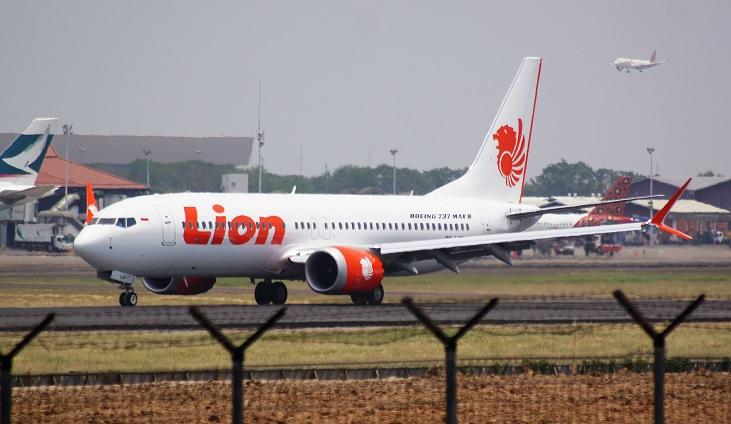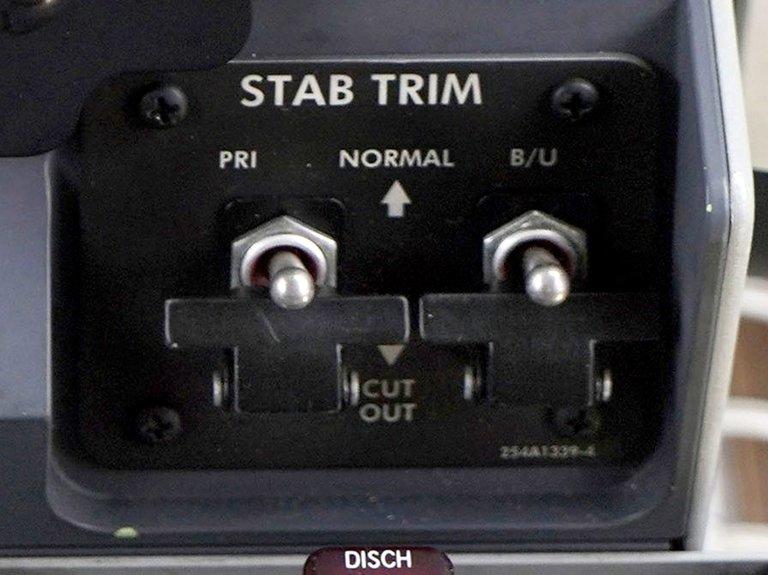When Boeing transitioned from the 737 NG model to the 737 MAX, designers altered a toggle switch panel that could have prevented both of the deadly crashes over the last year in Ethiopia and Indonesia, killing a combined 346 people, according to an investigation by the Seattle Times.

On the 737 NG, the right switch was labeled "AUTO PILOT" - and allowed pilots to deactivate the plane's automated stabilizer controls, such as the Maneuvering Characteristics Augmentation System (MCAS), suspected to be the culprit in both crashes. The left toggle switch on the NG would deactivate the buttons on the yoke which pilots regularly use to control the horizontal stabilizer.
On the 737 MAX, however, the two switches were altered to perform the same function, according to internal documents reviewed by the Times, so that they would disable all electronic stabilizer controls - including the MCAS and the thumb buttons on the yoke used to control the stabilizer.

He said if the company had maintained the switch design from the 737 NG, Boeing could have instructed pilots after the Lion Air crash last year to simply flip the “AUTO PILOT” switch to deactivate MCAS and continue flying with the normal trim buttons on the control wheel. He said that would have saved the Ethiopian Airlines plane and the 157 people on board.Boeing told the Times that they had historically called for pilots to flip both switches to disable a problematic or "runaway" stabilizer, so the button change matched that procedure, adding that the two switches "were retained for commonality of the crew interface."
“There’s no doubt in my mind that they would have been fine,” Lemme said. -Seattle Times
"Boeing strongly disagrees with any speculation or suggestion that pilots should deviate from these long-established and trained safety procedures," the company added.
During the October Lion Air flight, pilots were reportedly unaware of the MCAS system - while the day before, an off-duty pilot with knowledge of the stabilizer controls helped pilots disable the system on the same plane. Data from the flight revealed that the repeated commands from the MCAS system sent the flight from Bali to Jakarta plummeting into the sea.
After that crash, Boeing issued a directive calling for pilots to use the typical runaway stabilizer procedure to deal with MCAS in the event of a problem. Then pilots would be able to swivel the tail down manually by physically turning a control wheel that connects to the tail via cables.After they were able to manually control the stabilizer, the Ethiopian Airlines pilots appear to have flipped the cutoff switches back on, reactivating the MCAS system. Shortly after, it entered a fatal nosedive which killed all 157 people aboard.
But on the Ethiopian Airlines flight, the pilots appear to have recognized the errant MCAS problem and flipped the cutoff switches as described in the checklist. But then it appears that the pilots were unable to move the manual wheel, likely because the forces on the tail made it physically challenging to turn. -Seattle Times
"When you’re pulling on the column with 80-100 pounds of force trying to save your life, your troubleshooting techniques are very weak," said aviation consultant Doug Moss. "You need some gut-level instinctive things to do to solve the problem."
A veteran Boeing 737 test pilot said that all Boeing planes have two such cutoff switches, not just the 737. And both he and American Airlines Captain Dennis Tajer, a spokesman for the Allied Pilots Association who flies 737s, said they could think of no existing procedure that called for flipping only one of the switches.Notably, the FAA did not notify pilots that the functionality of the switches had been altered, simply noting in its documentation the labeling change "Stab Trim cutout switches panel nomenclature."
The procedure appears to be designed to prepare for a situation in which the plane’s stabilizer motor is for some reason jammed and moving uncommanded in one direction – a classic “runaway stabilizer” situation. That would require shutting off all power to the motor. -Seattle Times
source zerohedge
It is a critical error in the basics of flight itself , which even I as a former low time private pilot could understand. At take off and landing when there angle of attack changes going on all the time, you don’t install a system that requires time to deactivate or correct or research in a manual to the correct an error that been introduced into the flight control system. You’ve only got seconds to act and anything that requires more than a second to allow full unimpeded manual control back to the pilot is a time bomb. In this case, assuming a pilot would have immediately deactivated the angle of attack sensors, the computer program that directed the screw motor to adjust the horizontal stabilizer trim tab, or the power to the screw drive motor itself, it appears that it would have taken a lot of precious time for the pilot to manually undo the motorized screw driven input by the manual trim control wheel by hus seat, which was not enough time when you are that close to the ground.
Conversely, when you are at Flight level 37 , i.e., flying straight and level at 37,000 feet, why do you need such a system anyway? Even if you encounter turbulence, your best bet is to maintain the flight controls steady and cut power to avoid over stressing the aircraft, but basically you wouldn’t even need an MCAS . The last thing you would interested in is getting some erroneous information when you have been flying straight and level at 37,000 feet for an hour.
In other words, the engineers got the rationale for the MCAS system totally *** backwards, after they had already made a Frankensteinian modification of the plane with forward off center of gravity / envelope placement of bigger engines. This is incredible stupidity and logic.
here is my summation:
The new Max engines are so large they had to be moved forward on the wing.
The new engine nacelles THEMSELVES generate lift in addition to the normal wing lift.
The new engine nacelle lift is forward of the wings which produces a large torque and jacks the front of the plane up. Once the plane pitches up, the engine nacelles lift gets STRONGER and leads to a runaway pitch up scenario until a stall occurs.
Since this behavior is illegal in a commercial jet, Boeing hid the issue with poor software and did not tell anyone about it.
Including the pilots, airlines, or the FAA.